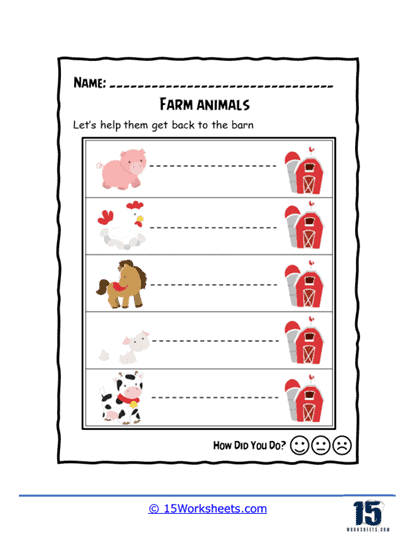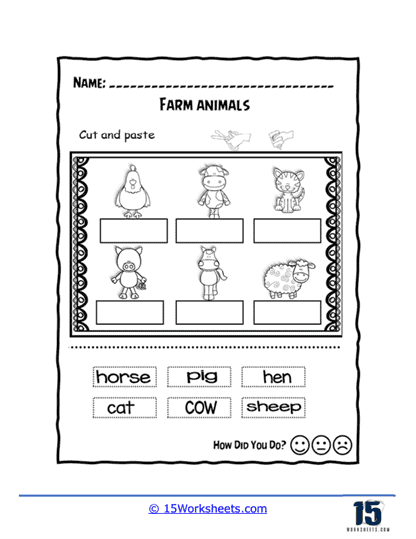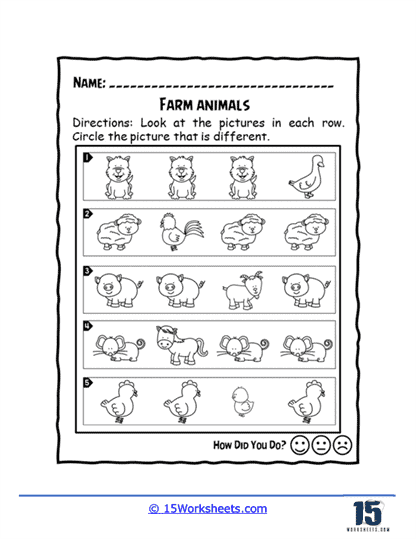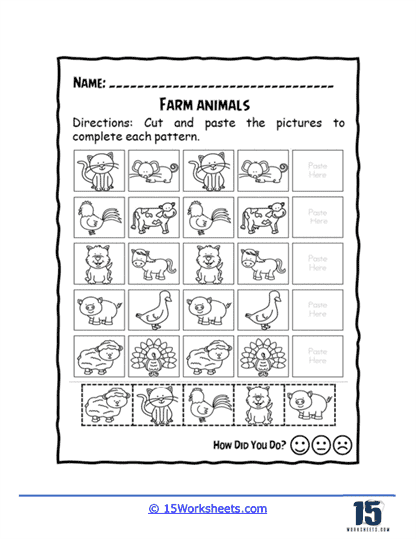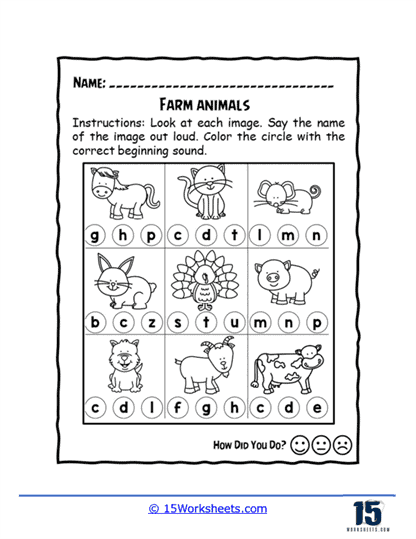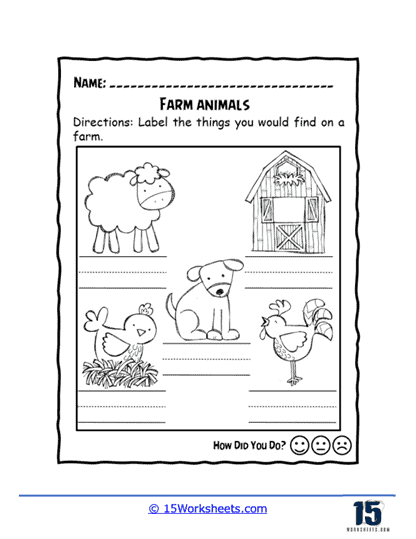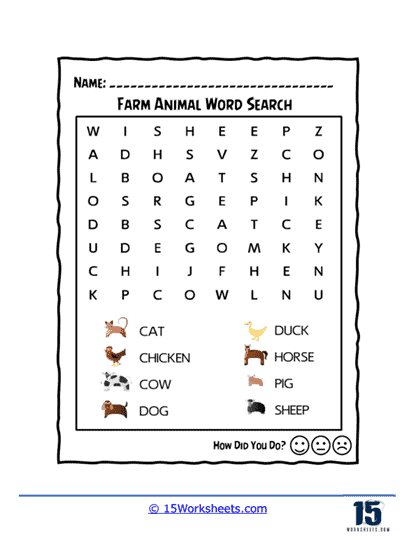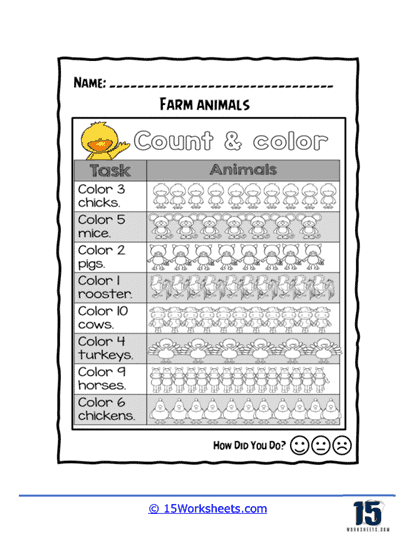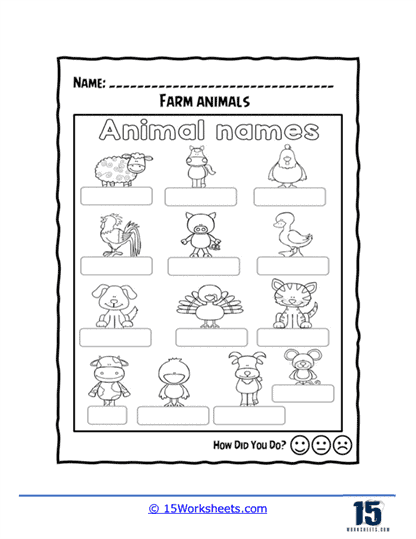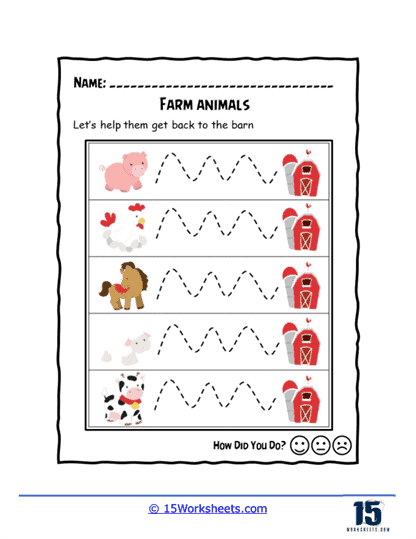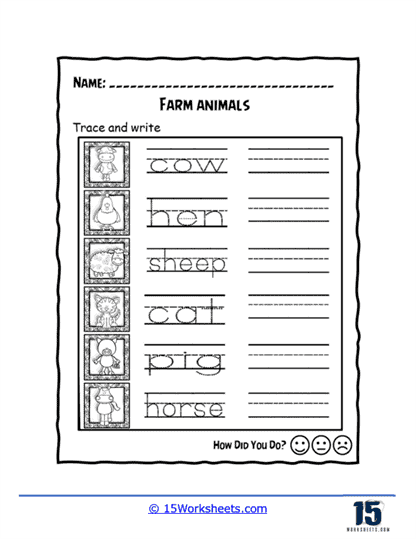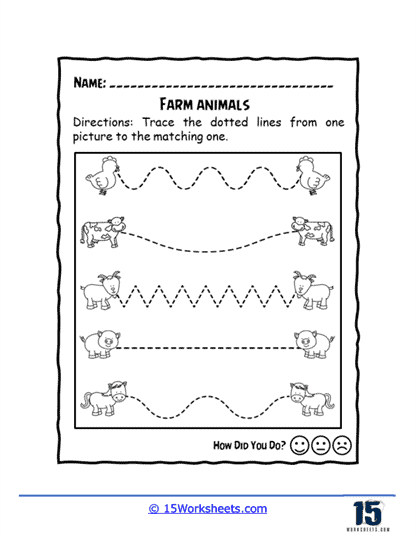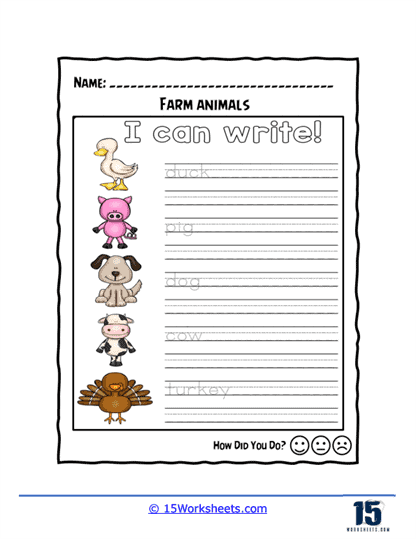Farm Animals Worksheets
All About These 15 Worksheets
Young learners have a natural curiosity that thrives when nurtured through creative and engaging activities. Imagine introducing them to the charming world of farm animals through a series of thoughtfully designed Kindergarten worksheets-worksheets that do more than just entertain, but ignite a spark of discovery and understanding. This collection of activities is not just a set of worksheets; it’s an opportunity to immerse students in the fascinating and vibrant world of farm animals, while simultaneously laying the foundation for essential skills they’ll carry with them for years to come.
Each worksheet in this collection is carefully crafted to foster learning in an enjoyable and interactive way. Through these activities, students will embark on a delightful journey where they will encounter a variety of familiar farm animals, from the clucking chickens to the oinking pigs, all while unknowingly building important cognitive and motor skills. These worksheets aren’t just about recognizing farm animals; they are about developing a wide array of abilities, from vocabulary and phonics to critical thinking and pattern recognition.
Take, for instance, the tracing activities. At first glance, tracing straight and wavy lines may seem like a simple task, but it plays a crucial role in developing fine motor skills and hand-eye coordination, two essential abilities that young children need to master before they can even begin to write. By engaging with these tracing exercises, students are strengthening the muscles in their hands and refining the precision needed to hold a pencil correctly. This hands-on approach to learning invites them to practice with a purpose, and each completed line represents a small victory on the path to becoming confident writers.
But the learning doesn’t stop there. These worksheets also focus on building vocabulary and letter recognition in a way that feels natural and fun. Through matching activities, students are encouraged to pair animal names with their corresponding images. This seemingly simple task is laying the groundwork for essential literacy skills, as children begin to recognize the connection between written words and the real world. Matching words to pictures not only strengthens their understanding of language but also expands their vocabulary, introducing them to words they may not encounter in everyday conversation.
Cutting and pasting activities add an additional layer of learning, combining both creativity and logic. In one exercise, students are asked to cut out farm animal names and paste them next to the correct animal images. This activity reinforces letter recognition and fosters animal identification, while also challenging children to think critically about the words they are handling. By engaging multiple senses-sight, touch, and even sound as they pronounce the names aloud-students form stronger neural connections, helping them remember and recognize these words more easily in the future.
Pattern recognition is another important skill cultivated through these worksheets. In one activity, students are invited to complete patterns of farm animal pictures by cutting and pasting missing pieces. This not only strengthens their visual perception and understanding of patterns, but it also introduces them to early mathematical thinking, a crucial building block for numeracy skills later on. Every pattern they complete is an exercise in logic and sequencing, skills that will serve them well in both math and science as they progress in their education.
Critical thinking is also at the heart of many of these activities. One particular worksheet asks students to identify and circle the animal that is different from the others in a given set. This type of exercise challenges their visual discrimination abilities, encouraging them to notice small details and make decisions based on what they observe. It’s an excellent way to sharpen their analytical skills, all while they think they’re just playing a fun game.
Phonics and letter-sound correspondence come to life in exercises where students are asked to color in the correct beginning sounds for farm animal names. By focusing on the initial sounds of words, students reinforce their understanding of phonics-a critical skill for reading readiness. They begin to understand the relationship between sounds and letters, which will eventually help them decode words and read with confidence.
This collection of worksheets also encourages students to dive deeper into their surroundings by labeling objects commonly found on a farm. By doing so, they not only expand their vocabulary but also strengthen their ability to associate words with the world around them. This word-object association is key to helping them make sense of language and how it applies to their environment, fostering a greater understanding of the world in which they live.
For those who love a challenge, word search activities are included, inviting students to search for and circle farm animal words hidden in a grid of letters. This task promotes letter recognition and word comprehension, all while students get to experience the joy of finding hidden treasures within the grid. The excitement of uncovering each word keeps them engaged, while they unwittingly sharpen their literacy skills.
Counting activities are also woven into this comprehensive collection, as students are asked to count farm animals and color in the corresponding number. This not only reinforces their counting skills but also strengthens their ability to connect numbers with quantities, a foundational concept in early mathematics. Each worksheet provides a unique way for children to practice counting in an engaging, farm-themed context.
And, of course, no learning experience would be complete without the opportunity to practice writing. Students are given multiple opportunities to identify, trace, and write the names of various farm animals. These tasks focus on letter formation, while also solidifying vocabulary skills. By tracing and writing the names of these animals, students develop the muscle memory needed for good penmanship and become more comfortable with written language.
Through these thoughtfully designed Farm Animals worksheets, young learners are not just introduced to the wonders of farm life-they are building the foundation for literacy, numeracy, and critical thinking skills. Each activity is a stepping stone toward future academic success, encouraging children to engage with the world around them and develop a love for learning that will last a lifetime.
What are the Most Common Farm Animals?
The most common farm animals vary depending on the region and type of farm. However, some farm animals are universally prevalent and play essential roles in agriculture. Here’s a list of some of the most common farm animals:
- Cattle – Cattle are raised primarily for milk and meat production. Dairy cows are bred for milk production, while beef cattle are raised for meat. Cattle are also used as draft animals in some areas.
- Pigs – Pigs are raised for meat production, providing pork, ham, and bacon. They have a high feed-to-meat conversion ratio, making them efficient livestock to raise.
- Sheep – Sheep are primarily raised for wool production, but they also provide meat (lamb and mutton) and milk. Sheep are adaptable to various climates and terrains, making them a popular choice for farmers worldwide.
- Goats – Goats are versatile animals raised for milk, meat, and fiber (mohair and cashmere). They are hardy and adaptable, able to thrive in a variety of environments.
- Chickens – Chickens are raised for both meat and egg production. Broiler chickens are bred for meat, while laying hens are raised for egg production. Chickens are a popular choice for small farms and backyard flocks due to their relatively low maintenance and space requirements.
- Turkeys – Turkeys are raised primarily for meat production, especially in North America. They are often associated with holiday feasts, such as Thanksgiving in the United States.
- Ducks – Ducks are raised for meat and egg production, as well as for their down feathers, used in bedding and clothing. Some duck breeds, like the Indian Runner, are also used for pest control.
- Geese – Geese are raised for meat, down feathers, and eggs. They are also used as “guard animals” on some farms due to their protective nature and loud honking.
- Horses – While not primarily raised for food, horses have a long history of use in agriculture as work animals. They have been used for plowing, transportation, and other tasks. Today, horses are more commonly associated with sport and recreation.
- Rabbits – Rabbits are raised for meat, fur, and sometimes as pets. They have a high reproductive rate and efficient feed-to-meat conversion, making them a popular choice for small-scale farming.
These are just a few of the most common farm animals found globally. Other animals, such as donkeys, mules, llamas, alpacas, and buffalo, are also raised on farms, depending on regional preferences and farming practices.

